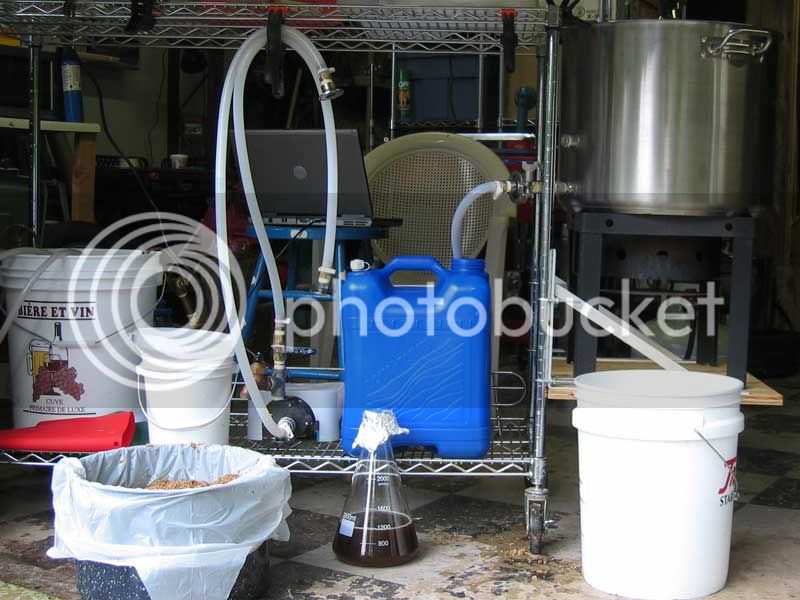O.K. guys, I've read several of these threads and even asked a couple of questions. My interest in "no chill" is not having to use ice as well as a lot more water to get my wort down to pitching temp. I did a hybrid "no chill" on a Full Sail Amber clone. I went from my boil kettle through my HVC and dropped the wort to ~105F. I ferment in a 7.5 gal keg. So I sanitized it, poured in the wort and put a stopper in it. I put the keg in my ale room for 2 days. I rehydrated my Safale US-05 yeast and pitched it. 8 hrs. later, it was happily checking. This was my hop schedule:
1.00 oz Mt. Hood [6.00 %] (60 min) Hops 18.8 IBU
1.00 oz Cascade [5.50 %] (15 min) Hops 8.6 IBU
.50 oz Mt. Hood [6.00%] (End) Hops 18.8 IBU
.50 oz Cascade [5.50 %] (End) Hops 8.6 IBU
I followed this without any correction. I've looked at POL's chart since then, but since I use a dry yeast, I dont make a starter, I just rehydrate I didn't think I could FWH. Now for my questions:
1) Since I did crash cool to ~105F, do ya'll think an adjustment is necessary?
2) If I don't crash cool at all next time and I use dry yeast, I presume I would add my 15min. hops when I put it in the keg. What about my end of boil hops?
Thanks for the help. "No Chill" is the bomb!
P.S. My hydrometer sample was excellent! Hops seemed perfect. Thanks - Dwain


